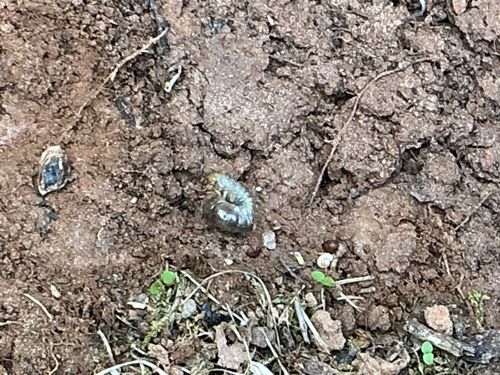White Grub (Larva of Scarab Beetles)
Scientific Name: Various species within the family Scarabaeidae (e.g., Phyllophaga spp., Popillia japonica, Cyclocephala spp.)
Order & Family: Coleoptera, Scarabaeidae
Size: 1/2 to 2 inches (1.2 to 5 cm) in length, depending on the species and larval instar.

Natural Habitat
Found in soil, particularly under lawns, gardens, agricultural fields, and compost piles. They prefer moist soil with organic matter.
Diet & Feeding
Primarily feed on the roots of grasses, crops, and other plants. Some species may also feed on decaying organic matter.
Behavior Patterns
White grubs are soil-dwelling larvae characterized by a C-shaped body. They spend most of their lives underground, feeding on roots. Their life cycle typically involves a period of 1-3 years as a larva, depending on the species and climate, before pupating and emerging as adult beetles. They are often found curled up when disturbed.
Risks & Benefits
Risks: White grubs are significant agricultural and horticultural pests. Their feeding on root systems can cause severe damage to lawns, golf courses, and various crops (such as corn, potatoes, and turfgrass), leading to wilting, yellowing, and eventual plant death. Benefits: In natural ecosystems, some species contribute to organic matter decomposition. They also serve as a food source for various animals, including birds, moles, and other insect predators.
Identified on: 9/22/2025